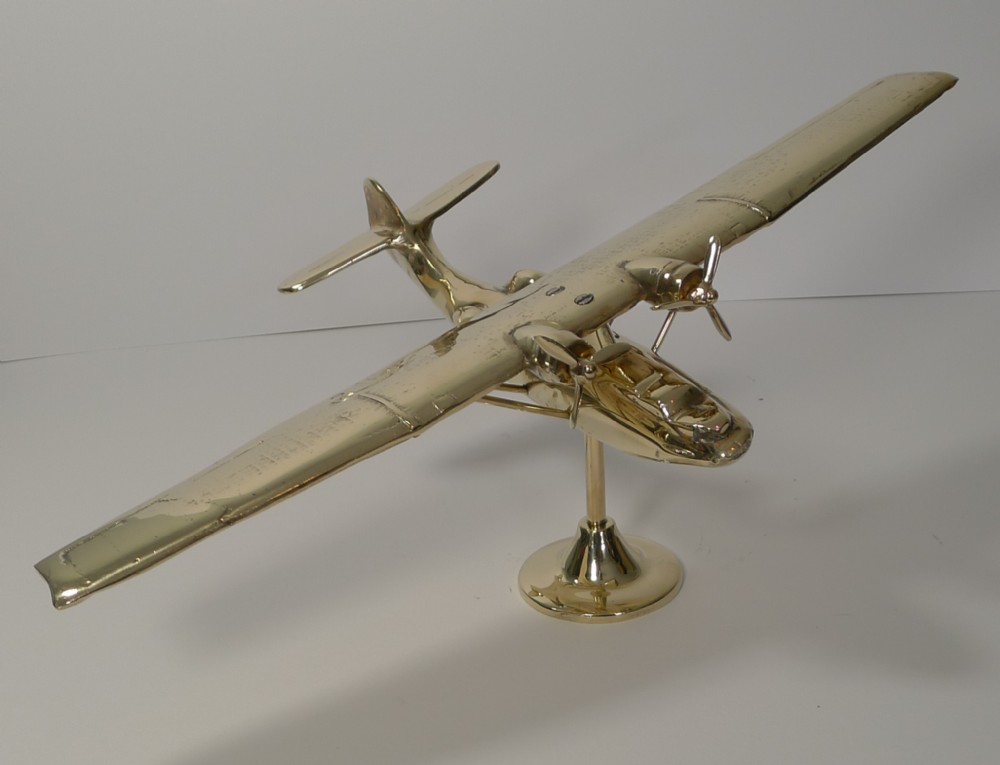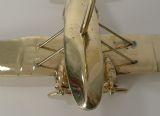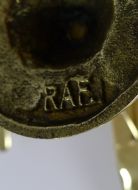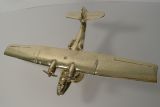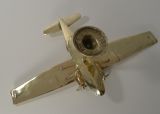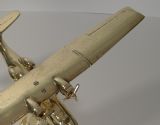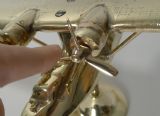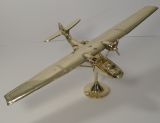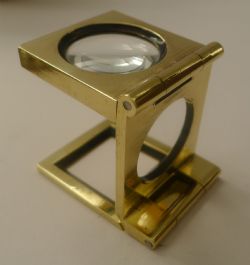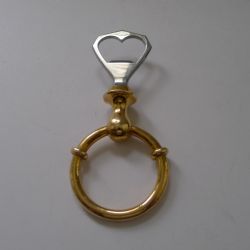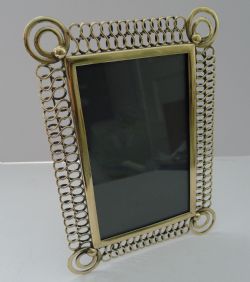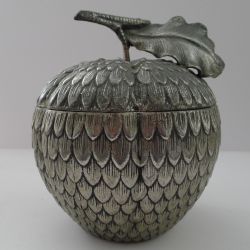World War 2 RAF Catalina Aircraft Model in Brass c.1941
Price
SOLDItem Ref
42062
Description
A handsome solid cast brass model of a RAF Catalina seaplane model dating to c.1941 when this American military aircraft first entered RAF service.It's a good heavy piece and a good size with a wingspan measuring 16 3/4". The underside of the stand has RAF cast into the brass base. The two propellers do turn.
I am presuming as it is marked RAF that it was made in England rather than American made.
It has been professionally cleaned and polished.
Excellent vintage condition measuring 16 3/4" wide x 10 1/2" deep x 7 1/4" tall.
Like many American military aircraft of the period the Consolidated Catalina actually gained its first combat experience in British hands. The Air Ministry purchased a single example of the PBY-4 (as the commercial Model 28-5) in 1939, and in July 1939 the aircraft flew across the Atlantic to the Marine Aircraft Experimental Establishment at Felixstowe, Suffolk to undergo tests. Even though these tests were cut short by the outbreak of the Second World War, the RAF still decided to place an order for the Catalina. The first of around 700 Catalinas to enter RAF service arrived early in 1941, and entered service with Nos.209 and 240 Squadrons of Coastal Command.
Sources differ on who was responsible for the use of the name Catalina, with both the RAF and Consolidated being given the credit. Catalina Island is off the coast of California, close to Los Angeles, and not too distant from Consolidated at San Diego. The RAF did prefer to give American aircraft names that reflected their country of origin, while Consolidated also named their aircraft. In either case the RAF knew the aircraft as the Catalina from 1939, while the US Navy did not adopt the name until 1 October 1941, when the vast majority of existing types of service aircraft were given names.
Coastal Command in Home Waters
The Catalina first saw active war service with RAF Coastal Command, before the United States entered the Second World War, but it was never present in British waters in large numbers. Seven squadrons operated the Catalina from Britain and two briefly from Iceland, giving the often quoted total of nine Coastal Command squadrons. However of these squadrons six used the Catalina with Coastal Command for less than a year, and only No.210 Squadron retained the Catalina in British from its introduction in 1941 until the end of the war. At no point were there more than three squadrons operating the Catalina from Britain.
Despite this limited level of use, the Catalina squadrons did produce some noteworthy achievements with Coastal Command. On 26 May 1941 it was a Catalina from No.209 Squadron that located the Bismarck, after the Navy lost radar contact with the German battleship, and Catalinas of No.240 Squadron shadowed her until surface ships regained contact. This was a rare example of the Catalina acting as the “eyes of the fleet” for the Royal Navy, a role that was normally performed by land based aircraft. Towards the end of the war, on 7 May 1945, a Catalina of No.210 squadron sank the 196th and last U-boat claimed by Coastal Command.
Item: 42062
FREE Worldwide Registered Airmail Directly From the UK
FREE Worldwide Shipping Directly From London, England
Internal Ref: 42062
Dimensions
Height = 18.4 cm (7")Width = 42.6 cm (17")
Depth = 26.7 cm (11")
This item is SOLD and is no longer available to purchase.
SEND EMAIL *


